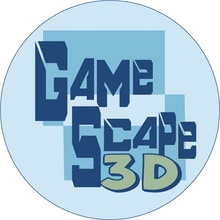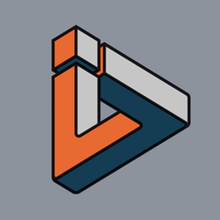Introduction
Today I am going to go over a 3D printing technique called Velocity Painting. This is a fun way to add a little extra to your 3D prints. Do not confuse this technique with lithophanes. Velocity Painting is a completely separate post processing technique for your sliced GCODE files. This doesn’t require any kind of actual paint!
Who Came Up With This and How Does It Work?

Velocity Painting was created by Mark Wheadon. It started out as an open source Perl script and evolved into a more user friendly app written by Guillaume.
The basic premise of Velocity Painting is to use a high contrast black and white image or pattern and transpose it onto the exterior of your 3D prints. It works by varying the speed on the exterior surfaces to either SLOW DOWN or SPEED UP. The default settings are typically to slow down for the black parts of the image and to speed up for the white parts.
To get this to work correctly, you need to set your slicer speeds to all the same speeds for the perimeters and disable any kind of slowing down for layer cooling or ‘quick layers’. It is very important to have the speed set correctly or else the Velocity Painting technique will not work correctly.
With that, let’s get to it!
Let’s Get Started!
First thing you need to do is navigate to velocitypainting.xyz/gui/download.html and grab the latest version for your operating system of choice. Next, choose a nice high contrast black and white image to paint onto your print. I have chosen to use this black and white Inov3D logo. Finally, choose something you want to superimpose this picture on. I chose just a simple cylinder model that I created in TinkerCad.
I use the latest Cura as my slicer of choice. The problem with Cura, is that it doesn’t have the ability to show speeds in Gcode files. This is important to see how your Velocity Paint project came out, before printing it. There’s a few ways to do this. You can navigate to the online viewer or use Repetier Host. I couldn’t get the online viewer to work, so I used Repetier Host. Simplify3D might also have the option to view speeds in Gcode, but I can’t confirm this.
Slicing Your Model for Velocity Painting
Like I had mentioned, it is EXTREMELY important to slice your model and set the infill, top/bottom, and perimeters to ALL of the same speed. I am printing this on my Aladdinbox SkyCube, so I chose a modest base speed of 40mm/s for printing. Feel free to adjust this value to what you normally print at on your printer. Next, you need to make sure that your model is centered on the build plate. This is important and you will need the center point of the bed later on for setting up the Velocity Paint app.
I chose to print this cylinder in vase mode, but the process also works for solid models as well.
Settings Your Velocity Paint Settings
After you get your model sliced, open up the Velocity Paint app. This is where the magic happens. Here’s a screenshot of my settings, but I will describe them all in detail below!

Loading Your Gcode, Image and Settings
Here’s a brief break down of each of the four buttons at the top of the app.
- ‘gcode’ : This button is how you load your presliced Gcode into the app.
- ‘image’ : This button is for loading your high contrast image into the app.
- ‘Load’ : Use this button to load a saved settings profile into the app.
- ‘Save’ : This button is to save a settings profile for the app.
Setting Up Your ‘Painted’ Image
Below these four buttons are the options to configure the app for painting the image onto your model. Under ‘Image Settings’ you will find three options: Width, Height, Z Offset. By adjusting the Width and Height, you can configure the size and aspect ratio of the image. You can raise the start point on the Z axis by changing the ‘Z offset’. To keep the aspect ratio locked into the original image’s ratio, you can add a value to either the X or Y axis and leave the other value as ‘–‘
Configuring Your Print Speeds
To the right are the ‘Print Speeds’. You will need to set the ‘Target’ speed for the speed you used EARLIER in your slicer. Then, you will need to set the ‘Low’ and ‘High’ speeds. I chose to use 15mm/s for the ‘Low’ and 40mm/s for the ‘High’. Typically, you will want to have a large variance between these two numbers.
Setting your Print Area
The ‘Printer Coordinates’ are where you enter the X and Y value for the center point of your print bed. This will be where Velocity Paint will center the image. For my Skycube, this is set to 55 and 55.
Time for the Paint!
The ‘Paint Type’ options allow you to change the style in which Velocity Paint transfers your image to the model. If you choose any of the ‘Projection’ styles, it will imprint your image onto that axis. ‘Cylinder’ will wrap your image around the entire model, as long as the image is sized correctly. ‘Sphere will start the image on a centered point on the X axis and wrap the image around your model. This is similar to ‘Cylinder’ but there will be a point of distortion in the center and then the image will stretch out.
After you have configured it to your liking, hit the ‘Generate’ button and save your NEW Velocity Painted Gcode!
 Did It Work?
Did It Work?
Now, it’s time to check and see if the magic worked! Either drop your Gcode file into the online viewer or start up your copy of Repetier Host. If you are using Repetier Host, after uploading your Gcode, you will need to change the ‘Colors’ option from ‘Extruder’ to ‘Speed’.
VIOLA! Your Velocity Painted image should have appeared on your model now! If it looks fine, upload it to your printer and print it up. Otherwise, you can tweak your Velocity Paint settings and fine tune it. Remember to save your setting configurations, otherwise there is a high probability for failure. Getting the ‘Image Settings’ correct is the hardest part. Take your time, and be patient!
Conclusion
Velocity Painting is a fun way to add just a little more to your 3D prints. I think it’s a great technique that Mark developed. It took me a little trial and error to get the image to be displayed correctly. This wasn’t anything to do with the application or process. It was mostly due to my inability to comprehend the aspect ratios for the images that I was using.
In the near future, I will do some more experimenting with Velocity Painting by altering some of the values that I used in this article.
Stay tuned for more Velocity Painting articles and be sure to check out the 3D Printing Software Deals page for any discounts or coupons!
The post Velocity Painting: Learn to Paint Your Prints with Speed! appeared first on Inov3D.



